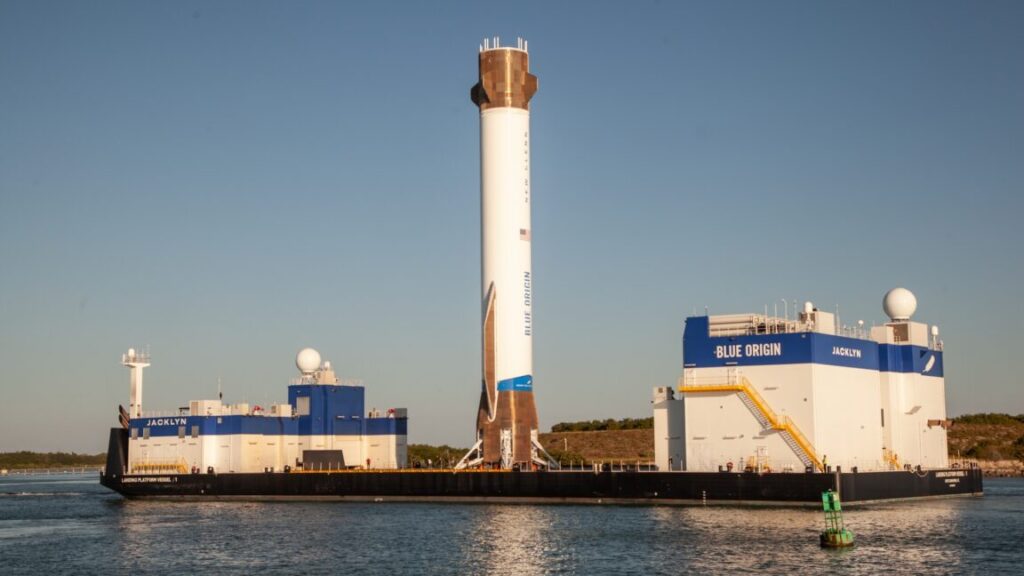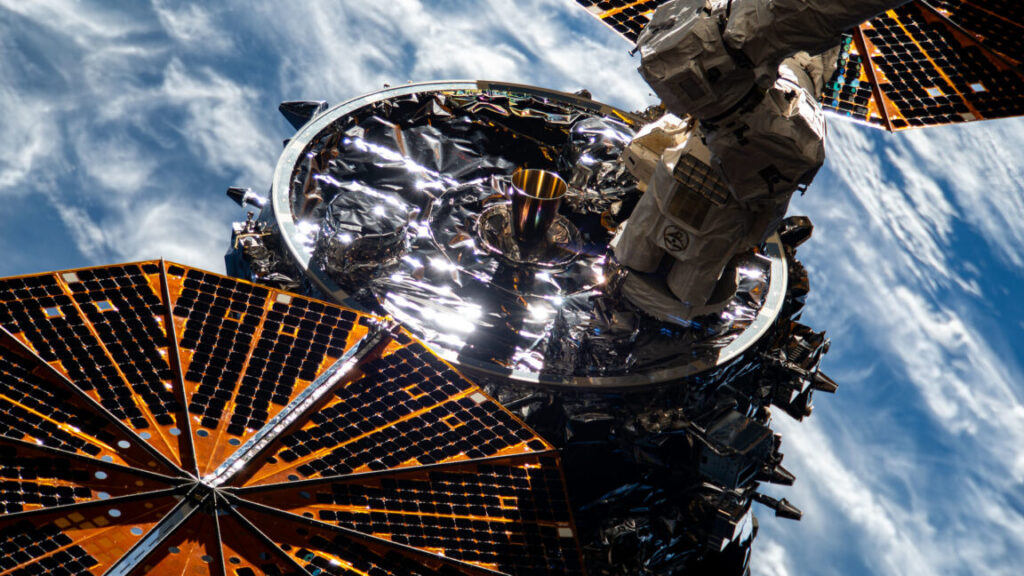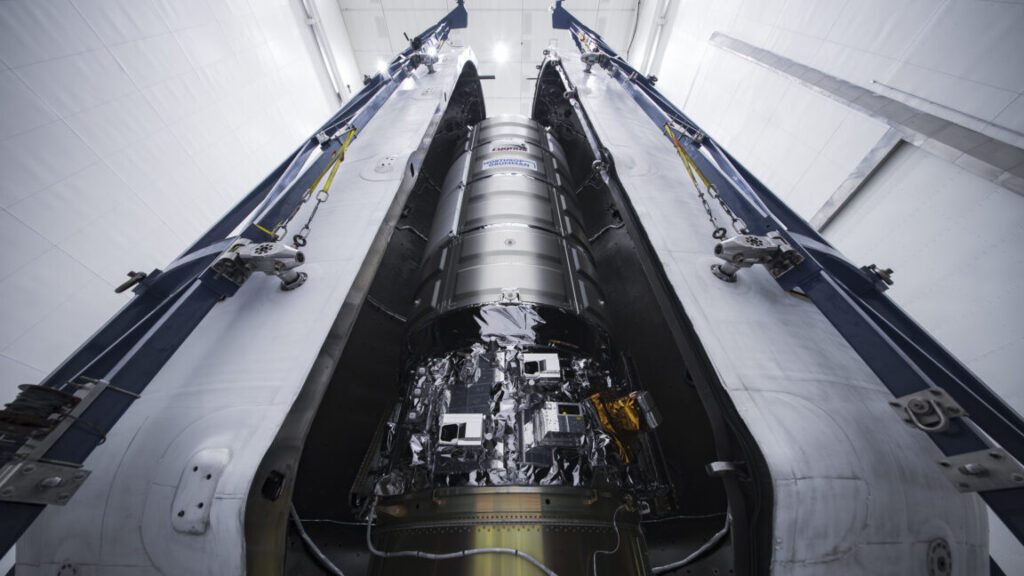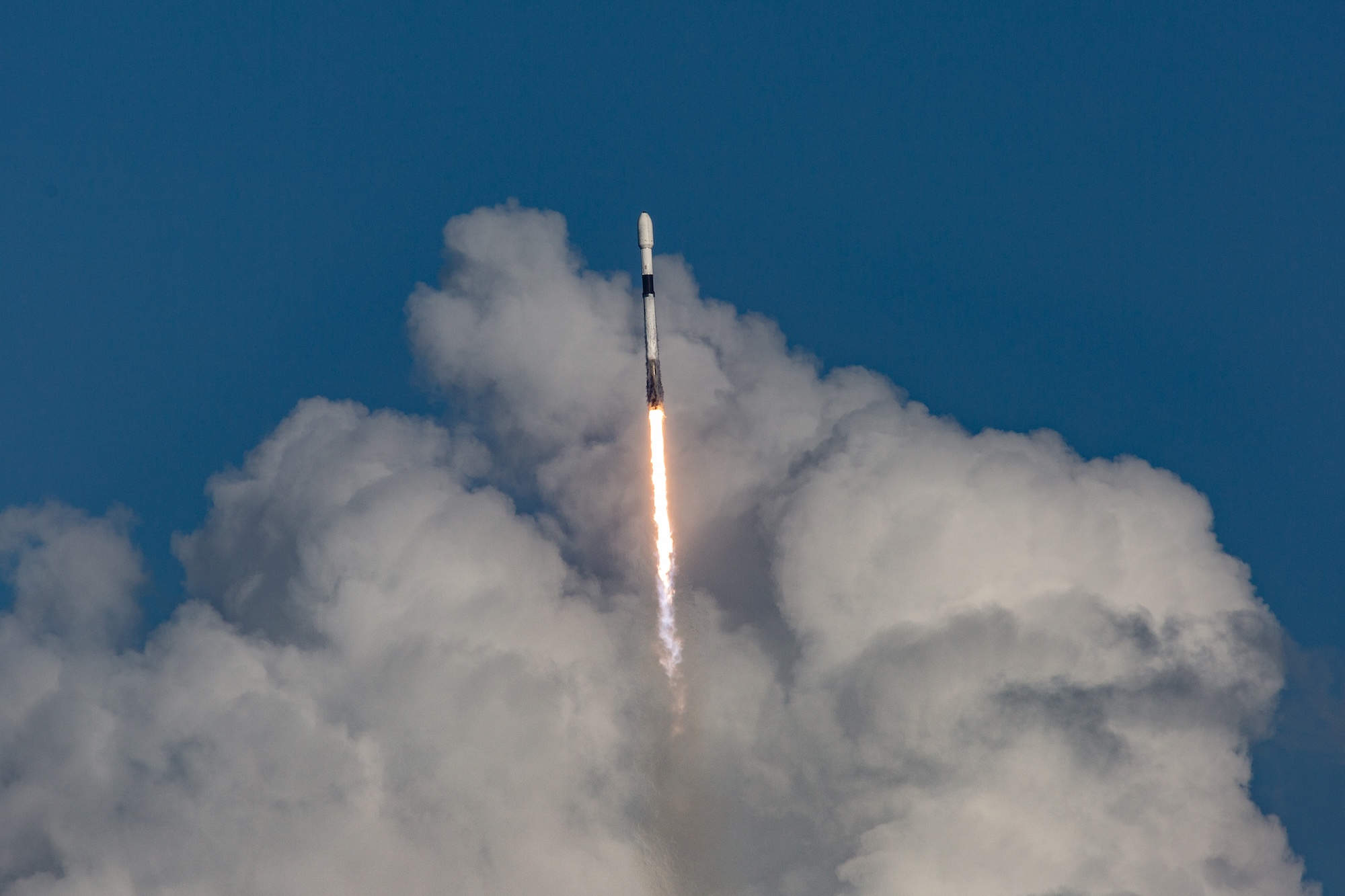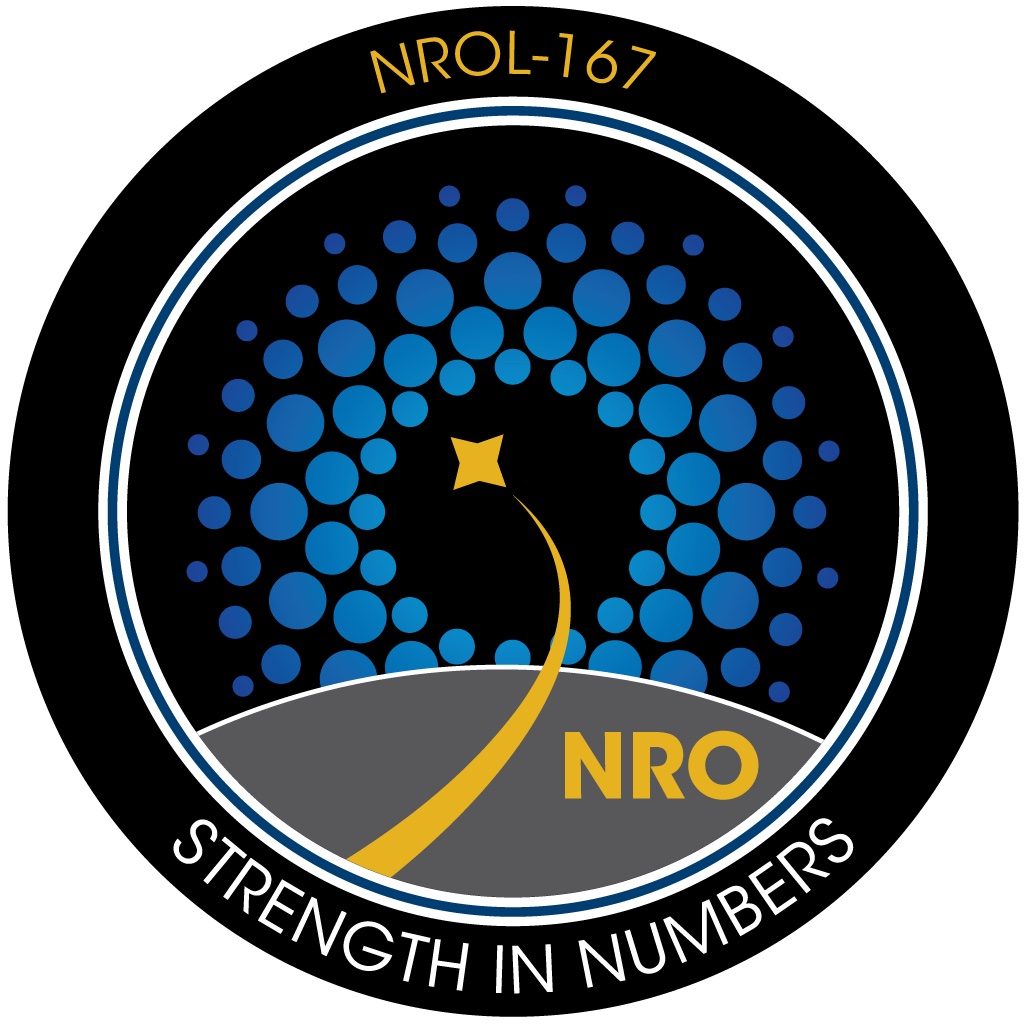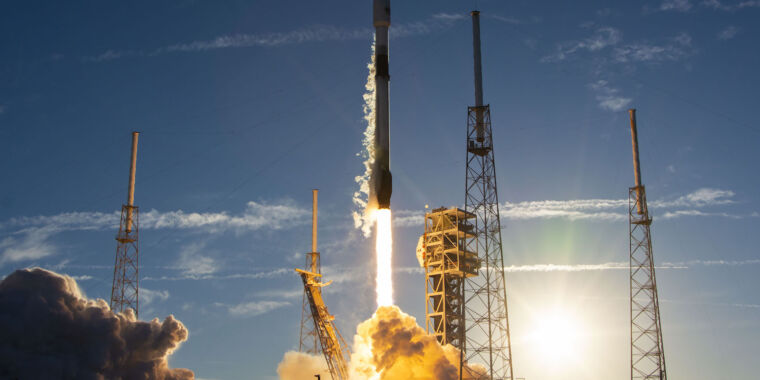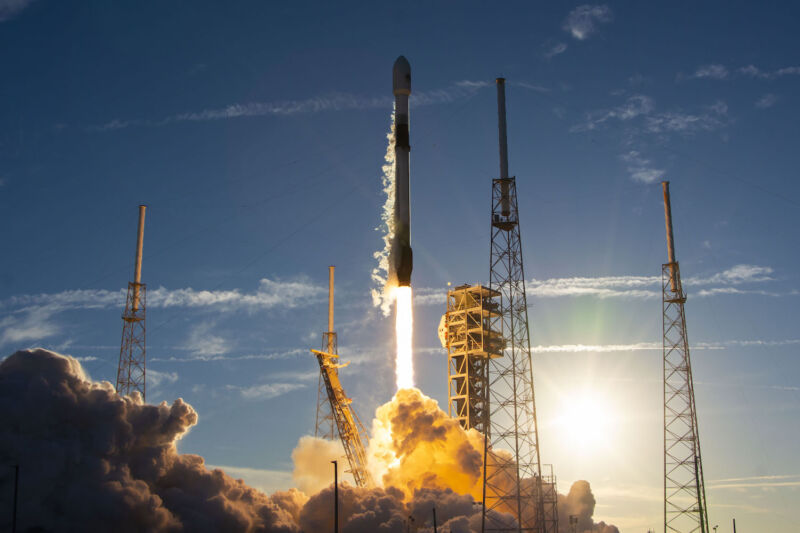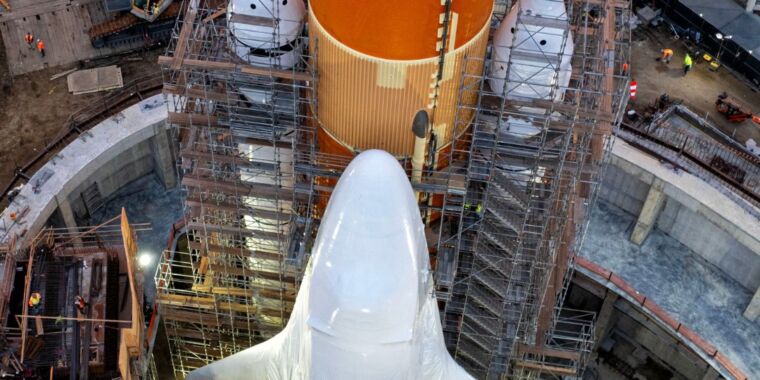Rocket Report: SpaceX’s next-gen booster fails; Pegasus will fly again
With the government shutdown over, the FAA has lifted its daytime launch curfew.
Blue Origin’s New Glenn booster arrives at Port Canaveral, Florida, for the first time Tuesday aboard the “Jacklyn” landing vessel. Credit: Manuel Mazzanti/NurPhoto via Getty Images
Welcome to Edition 8.20 of the Rocket Report! For the second week in a row, Blue Origin dominated the headlines with news about its New Glenn rocket. After a stunning success November 13 with the launch and landing of the second New Glenn rocket, Jeff Bezos’ space company revealed a roadmap this week showing how engineers will supercharge the vehicle with more engines. Meanwhile, in South Texas, SpaceX took a step toward the first flight of the next-generation Starship rocket. There will be no Rocket Report next week due to the Thanksgiving holiday in the United States. We look forward to resuming delivery of all the news in space lift the first week of December.
As always, we welcome reader submissions. If you don’t want to miss an issue, please subscribe using the box below (the form will not appear on AMP-enabled versions of the site). Each report will include information on small-, medium-, and heavy-lift rockets, as well as a quick look ahead at the next three launches on the calendar.

Northrop’s Pegasus rocket wins a rare contract. A startup named Katalyst Space Technologies won a $30 million contract from NASA in August to build a robotic rescue mission for the agency’s Neil Gehrels Swift Observatory in low-Earth orbit. Swift, in space since 2004, is a unique instrument designed to study gamma-ray bursts, the most powerful explosions in the Universe. The spacecraft lacks a propulsion system and its orbit is subject to atmospheric drag, and NASA says it is “racing against the clock” to boost Swift’s orbit and extend its lifetime before it falls back to Earth. On Wednesday, Katalyst announced it selected Northrop Grumman’s air-launched Pegasus XL rocket to send the rescue craft into orbit next year.
Make this make sense … At first glance, this might seem like a surprise. The Pegasus XL rocket hasn’t flown since 2021 and has launched just once in the last six years. The solid-fueled rocket is carried aloft under the belly of a modified airliner, then released to fire payloads of up to 1,000 pounds (450 kilograms) into low-Earth orbit. It’s an expensive rocket for its size, with Northrop charging more than $25 million per launch, according to the most recent public data available; the satellites best suited to launch on Pegasus will now find much cheaper tickets to orbit on rideshare missions using SpaceX’s Falcon 9 rocket. There are a few reasons none of this mattered much to Katalyst. First, the rescue mission must launch into a very specific low-inclination orbit to rendezvous with the Swift observatory, so it won’t be able to join one of SpaceX’s rideshare missions. Second, Northrop Grumman has parts available for one more Pegasus XL rocket, and the company might have been willing to sell the launch at a discount to clear its inventory and retire the rocket’s expensive-to-maintain L-1011 carrier aircraft. And third, smaller rockets like Rocket Lab’s Electron or Firefly’s Alpha don’t quite have the performance to place Katalyst’s rescue mission into the required orbit. (submitted by gizmo23)
The easiest way to keep up with Eric Berger’s and Stephen Clark’s reporting on all things space is to sign up for our newsletter. We’ll collect their stories and deliver them straight to your inbox.
Ursa Major rakes in more cash. Aerospace and defense startup Ursa Major Technologies landed a $600 million valuation in a new fundraising round, the latest sign that investors are willing to back companies developing new rocket technology, Bloomberg reports. Colorado-based Ursa Major closed its Series E fundraising round with investments from the venture capital firms Eclipse, Woodline Partners, Principia Growth, XN, and Alsop Louie Partners. The company also secured $50 million in debt financing. Ursa Major is best known as a supplier of liquid-fueled rocket engines and solid rocket motors to power a range of commercial and government vehicles.
Hypersonic tailwinds … Ursa Major says it is positioned to provide the US industrial base with propulsion systems faster and more affordably than legacy contractors can supply. “The company will rapidly field its throttleable, storable, liquid-fueled hypersonic and space-based defense solution, as well as scale its solid rocket motor and sustained space mobility manufacturing capacity,” Ursa Major said in a press release. Its customers include BAE Systems, which will use Ursa Major’s solid rocket motors to power tactical military-grade rockets, and Stratolaunch, which uses Ursa Major’s liquid-fueled Hadley engine for its hypersonic Talon-A spaceplane.
Rocket Lab celebrates two launches in 48 hours. Rocket Lab launched a payload for an undisclosed commercial customer Thursday, just hours after the company announced plans for the launch, Space News reports. The launch from Rocket Lab’s primary spaceport in New Zealand used the company’s Electron rocket, but officials released little more information on the mission, other than its nickname: “Follow My Speed.” An artist’s illustration on the mission patch indicated the payload might have been the next in a line of Earth-imaging satellites from the remote sensing company BlackSky, although the firm’s previous satellites have not launched with such secrecy.
Two hemispheres … Thursday’s launch from the Southern Hemisphere came just two days after Rocket Lab’s previous mission lifted off from Wallops Island, Virginia. That flight was a suborbital launch to support a hypersonic technology demonstration for the Defense Innovation Unit and the Missile Defense Agency. All told, Rocket Lab has now launched 18 Electron rockets this year with 100 percent mission success, a company record.
Spanish startup makes a big reveal. The Spanish company PLD Space released photos of a test version of its Miura 5 rocket Thursday, calling it a “decisive step forward in the orbital launcher validation campaign.” The full-scale qualification unit, called QM1, will allow engineers to complete subsystem testing under “real conditions” to ensure the rocket’s reliability before its first mission scheduled for 2026. The first stage of the qualification unit will undergo a full propellant loading test, while the second stage will undergo a destructive test in the United States to validate the rocket’s range safety destruct system. Miura 5 is designed to deliver a little more than a metric ton (2,200 pounds) of payload to low-Earth orbit.
Still a long way to go … “Presenting our first integrated Miura 5 unit is proof that our model works: vertical integration, proprietary infrastructure and a philosophy based on testing, learning, and improving,” said Raúl Torres, CEO and co-founder of PLD Space. The reveal, however, is just the first step in a qualification campaign that takes more than a year for most rocket companies. PLD Space aims to go much faster, with plans to complete a second qualification rocket by the end of December and unveil its first flight rocket in the first quarter of next year. “This unprecedented development cadence in Europe reinforces PLD Space’s position as the company that has developed an orbital launcher in the shortest time–just two years–whilst meeting the highest quality standards,” the company said in a statement. This would be a remarkable achievement, but history suggests PLD Space has a steep climb in the months ahead. (submitted by Leika and EllPeaTea)
Sweden digs deep in pursuit of sovereign launch. In an unsettled world, many nations are eager to develop homegrown rockets to place their own satellites into orbit. These up-and-coming spacefaring nations see it as a strategic imperative to break free from total reliance on space powers like Russia, China, and the United States. Still, some decisions are puzzling. This week, the Swedish aerospace and defense contractor Saab announced a $10 million investment in a company named Pythom. If you’re not familiar with this business, allow me to link back to a 2022 story published by Ars about Pythom’s questionable safety practices. The company has kept quiet since then, until the name surprisingly popped up again in a press release from Saab, a firm with a reputation that seems to be diametrically opposed to that of Pythom.
Just enough … The statement from Saab suggests its $10 million contribution to Pythom will make it the “lead investor” in the company’s recent funding round. Pythom hasn’t said anything more about this funding round, but Saab said the investment will accelerate Pythom’s “development and deployment of its launch systems,” which include an initial rocket capable of putting up to 330 pounds (150 kilograms) of payload into low-Earth orbit. $10 million may be just enough to keep Pythom afloat for a couple more years but is far less than the money Pythom would need to get serious about fielding an orbital launcher. Pythom is headquartered in California, but it has Swedish roots. It was founded by the Swedish married couple Tina and Tom Sjögren. The company has a couple dozen employees, and a handful of them are based in Sweden, according to Pythom’s website. (submitted by Leika and EllPeaTea)

China is about to launch an astronaut lifeboat. China is set to launch an uncrewed Shenzhou spacecraft to the Tiangong space station to provide the Shenzhou 21 astronauts with a means of returning home, Space News reports. The launch of China’s Shenzhou 22 mission is scheduled for Monday night, US time, aboard a Long March 2F rocket. Instead of carrying astronauts, the ship will ferry cargo to the Chinese Tiangong space station. More importantly, it will provide a safe ride home for the three astronauts living and working aboard the orbiting outpost.
How did we get here? … The Shenzhou 20 spacecraft currently docked to the Tiangong station was damaged by a suspected piece of space junk, cracking its window and rendering it unable to meet China’s safety standards for returning astronauts to Earth. The damage discovery occurred just before three outgoing crew members were supposed to ride Shenzhou 20 home earlier this month. Instead, those three astronauts departed the station and returned to Earth on the newer, undamaged Shenzhou 21 spacecraft. That left the other three crew members on Tiangong with only the damaged Shenzhou 20 spacecraft to get them home in the event of an emergency. Shenzhou 22 will replace Shenzhou 20, providing a lifeboat for the rest of the crew’s six-month stay in space. (submitted by EllPeaTea)
Atlas V launches for Viasat. United Launch Alliance launched its Atlas V rocket on November 13 with a satellite for the California-based communications company Viasat, Spaceflight Now reports. The launch came a week after the mission was scrubbed due to a faulty liquid oxygen tank vent valve on the Atlas booster. ULA rolled the rocket back to the Vertical Integration Facility, replaced it with a new valve, and returned the rocket to the pad on November 12. The launch the following day was successful, with the Atlas V’s Centaur upper stage deploying the ViaSat-3 F2 spacecraft into a geosynchronous transfer orbit nearly three-and-a-half hours after liftoff from Cape Canaveral Space Force Station, Florida.
End of an era … This was the final launch of an Atlas V rocket with a payload heading for geosynchronous orbit. These are the kinds of missions the Atlas V was designed for more than 25 years ago, but the market has changed. All of the Atlas V’s remaining 11 missions will target low-Earth orbit carrying broadband satellites for Amazon or Boeing’s Starliner spacecraft heading for the International Space Station. The Atlas V will be retired in the coming years in favor of ULA’s new Vulcan rocket.
SpaceX launches key climate change monitor. SpaceX launched a joint NASA-European environmental research satellite early Monday, the second in an ongoing billion-dollar project to measure long-term changes in sea level, a key indicator of climate change, CBS News reports. The first satellite, known as Sentinel-6 and named in honor of NASA climate researcher Michael Freilich, was launched in November 2020. The latest spacecraft, Sentinel-6B, was launched from California atop a Falcon 9 rocket this week. Both satellites are equipped with a sophisticated cloud-penetrating radar. By timing how long it takes beams to bounce back from the ocean 830 miles (1,336 kilometers) below, the Sentinel-6 satellites can track sea levels to an accuracy of about one inch while also measuring wave height and wind speeds. The project builds on earlier missions dating back to the early 1990s that have provided an uninterrupted stream of sea level data.
FAA restrictions lifted … The Federal Aviation Administration lifted a restriction on commercial space operations this week that limited launches and reentries to the late night and early morning hours, Spaceflight Now reports. The FAA imposed a daytime curfew on commercial launches as it struggled to maintain air traffic control during the recent government shutdown. Those restrictions, which did not affect government missions, were lifted Monday. (submitted by EllPeaTea)

Blue Origin’s New Glenn will grow larger. One week after the successful second launch of its large New Glenn booster, Blue Origin revealed a road map on Thursday for upgrades to the rocket, including a new variant with more main engines and a super-heavy lift capability, Ars reports. These upgrades to the rocket are “designed to increase payload performance and launch cadence, while enhancing reliability,” the company said in an update published on its website. The enhancements will be phased in over time, starting with the third launch of New Glenn, which is likely to occur during the first half of 2026.
No timelines … The most significant part of the update concerned an evolution of New Glenn that will transform the booster into a super-heavy lift launch vehicle. The first stage of this evolved vehicle will have nine BE-4 engines instead of seven, and the upper stage will have four BE-3U engines instead of two. In its update, Blue Origin refers to the new vehicle as 9×4 and the current variant as 7×2, a reference to the number of engines in each stage. “New Glenn 9×4 is designed for a subset of missions requiring additional capacity and performance,” the company said. “The vehicle carries over 70 metric tons to low-Earth orbit, over 14 metric tons direct to geosynchronous orbit, and over 20 metric tons to trans-lunar injection. Additionally, the 9×4 vehicle will feature a larger 8.7-meter fairing.” The company did not specify a timeline for the debut of the 9×4 variant. A spokesperson for the company told Ars, “We aren’t disclosing a specific timeframe today. The iterative design from our current 7×2 vehicle means we can build this rocket quickly.”
Recently landed New Glenn returns to port. Blue Origin welcomed “Never Tell Me the Odds” back to Cape Canaveral Space Force Station, Florida, on Thursday, where the rocket booster launched exactly one week prior, Florida Today reports. The New Glenn’s first stage booster landed on Blue Origin’s offshore recovery barge, which returned it to Port Canaveral on Tuesday with great fanfare. Blue Origin’s founder, Jeff Bezos, rode the barge into port, posing for photos with the rocket and waving to onlookers viewing the spectacle from a nearby public pier. The rocket was lowered horizontally late Wednesday morning, as spectators watched alongside the restaurants and fishing boats at the port.
Through the gates … Officials from Blue Origin guided the 188-foot-long New Glenn booster to the Space Force station Thursday, making Blue Origin the only company besides SpaceX to return a space-flown booster through the gates. Once back at Blue Origin’s hangar, the rocket will undergo inspections and refurbishment for a second flight, perhaps early next year. “I could not be more excited to see the New Glenn launch, and Blue Origin recover that booster and bring it back,” Col. Brian Chatman, commander of Space Launch Delta 45, told Florida Today. “It’s all part of our certification process and campaign to certify more national security space launch providers, launch carriers, to get our most crucial satellites up on orbit.”
Meanwhile, down at Starbase. SpaceX rolled the first of its third-generation Super Heavy boosters out of the factory at Starbase, Texas, this week for a road trip to a nearby test site, according to NASASpaceflight.com. The booster rode SpaceX’s transporter from the factory a few miles down the road to Massey’s Test Site, where technicians prepared the rocket for cryogenic proof testing. However, during the initial phases of testing, the booster failed early on Friday morning.
Tumbling down … At the Starship launch site, ground teams are busy tearing down the launch mount at Pad 1, the departure point for all of SpaceX’s Starships to date. SpaceX will upgrade the pad for its next-generation, more powerful Super Heavy boosters, while Starship V3’s initial flights will take off from Pad 2, a few hundred meters away from Pad 1.
Next three launches
Nov. 22: Falcon 9 | Starlink 6-79 | Cape Canaveral Space Force Station, Florida | 06: 59 UTC
Nov. 23: Falcon 9 | Starlink 11-30 | Vandenberg Space Force Base, California | 08: 00 UTC
Nov. 25: Long March 2F | Shenzhou 22 | Jiuquan Satellite Launch Center, China | 04: 11 UTC

Rocket Report: SpaceX’s next-gen booster fails; Pegasus will fly again Read More »
